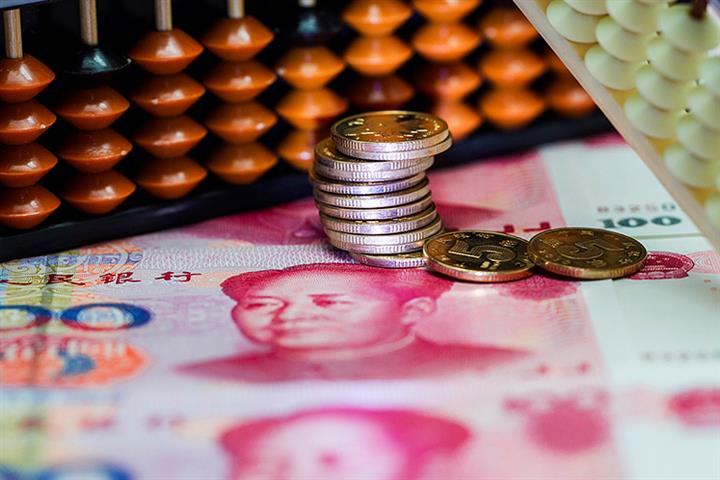 China's M2 Money Grew at Quickest Clip Since 2017 Last Month
China's M2 Money Grew at Quickest Clip Since 2017 Last Month(Yicai Global) May 12 -- China’s M2 money supply, which is the country’s broadest money classification and includes cash in circulation all deposits, grew 11 percent annually in April, its most explosive growth since 2017.
The M2 supply reached nearly CYN209.4 trillion (USD29.5 trillion), according to data the People’s Bank of China published yesterday. Banks issued CNY1.7 trillion (USD240 million) worth of yuan-based loans in April, dishing out around CNY682 billion (USD96 billion) more than year-ago period and setting a record high for the month. March loans tallied CNY2.85 trillion after rising more than 10 percent for the first time in three years.
M2 growth was faster than expected in April because the central bank stuck to its flexible, prudent monetary policy and this facilitated currency creation, China Minsheng Bank’s Chief Researcher Wen Bin told Yicai Global. Covid-19 also led to increased fiscal spending and ample liquidity in the banking sector, he added, saying M2 money supply and social financing would rise faster than nominal gross domestic product in a shift to more accessible credit and enhanced support for the real economy.
China’s outstanding total social financing was up 12 percent annually at CNY265.2 trillion as of the end of last month, with outstanding yuan-denominated loans to the real economy up 13.1 percent at CNY160.5 trillion.
The rise in M2 growth came as the central bank has cut the reserve requirement ratio, conducted more open market operations, lowered policy interest rates and kept liquidity abundant since the start of this year. Zhejiang Securities’ Chief Economist Li Chao expects M2 and social financing to increase by more than 12 percent this year, possibly doubling nominal GDP growth.
More RRR and interest rates are likely, Li said, forecasting the central bank will focus on making credit easier to come by and supporting businesses, and that bonds will be a popular way of raising funds.
Proactive fiscal policy will play a greater role in hedging against the macroeconomic downturn and stimulating aggregate demand, added Wang Yifeng, chief banking sector analyst at Everbright Securities’ research institute. Monetary policy will match fiscal policy through monetary base supply while strengthening structural regulation and reducing financing costs to the real economy, he said.
Editor: James Boynton